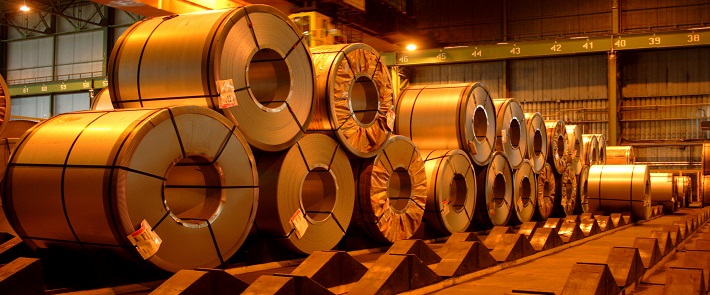Sunday, 21/12/2025 | 23:40 GMT+7
Steel company ArcelorMittal South Africa has improved its data centre power usage effectiveness (PUE) by more than 65%, following the implementation of a new, modular data centre solution by Datacentrix, a provider of high performing and secure ICT solutions. The PUE measurement was carried out by Datacentrix both prior and post implementation.
These enhanced power, water and cooling efficiencies are also set to save the organisation more than 20% on operational costs over a five-year period.
ArcelorMittal South Africa is the largest steel producer on the African continent, with a production capacity of 6.5 million tonnes of liquid steel per annum. ArcelorMittal South Africa's global standing is further underpinned as part of the world's largest steel producer, the ArcelorMittal Group. The company is the world's number one steel company, with 232 000 employees worldwide.
According to Brian Lendrum, commercial business development manager at Datacentrix, ArcelorMittal South Africa's new modular data centre was rolled out within a record 76 days, following a year of planning and discussions

"The original data centre was more than 30 years old and needed to be upgraded for ArcelorMittal South Africa to improve energy consumption, space utilisation and environmental conditioning efficiencies. Not only were its CRAC (computer room air conditioning) units and water cooling plants reaching end of life, but the previous data centre needed to be better arranged and systemised in order to fit into a reduced space."
Furthermore, the existing data centre set-up did not include fire suppression, critical for controlling a fire without disrupting the flow of business and without threatening personnel inside the data centre.
Thus, Lendrum explains, the principle driving factors in the Datacentrix data centre design submitted to ArcelorMittal South Africa included the roll-out of high-density and energy-efficient power and cooling technologies, saving floor space and room height, and the inclusion of fire suppression.
"For these reasons, we built our business case around technology that would be fast, flexible, modular and predictable, removing unnecessary implementation complexities, massively improving cooling and power efficiencies, and saving our client money in the long term."
"A longstanding IT equipment and services partner of ArcelorMittal, Datacentrix's commitment to this project was of the highest order, with the organisation showing a great dedication to this project for many months without remuneration," says an ArcelorMittal South Africa spokesperson.
"The company became progressively more involved, to the point that it even engaged a professional IT engineering company to run a full environmental and feasibility study on our previous data centre, which was then used as the basis for further planning and proposals.
"It was this commitment, along with Datacentrix's position as a trusted vendor to ArcelorMittal for many years, that clinched this project for them," the spokesperson adds.
The new data centre has been reduced from 58 racks to 28, with capacity for long-term growth and power and cooling capacity for end-of-day. It is also 100% redundant, with an availability of 99.9%. From a fire suppression point of view, a green gas solution with a 20-year warranty was installed.
"In terms of PUE, we have managed to improve efficiencies from between three and four to 1.6 currently," Lendrum explains. "However, based on future calculations at full load, this smaller, more compact facility should run at an average PUE of 1.2, giving a maximum of 85% efficiency."
The solution also includes a proactive IP-based monitoring solution that monitors all of the environmental and security aspects of the new data centre.
Says ArcelorMittal: "The energy efficiency of the new solution implemented by Datacentrix will result in a decrease in operational costs over time. In addition, we are experiencing a number of non-tangible benefits related to the improved space utilisation, such as a more orderly, and easier to manage and monitor data centre environment."
Truong Duy








 Webinar 2: “Financial Support for Energy Efficiency Enterprises – Opportunities and Challenges”
Webinar 2: “Financial Support for Energy Efficiency Enterprises – Opportunities and Challenges”
 Vietnamese enterprises achieve green growth and cut costs through energy efficiency
Vietnamese enterprises achieve green growth and cut costs through energy efficiency
 Capacity Building for Program Implementing Entity
Capacity Building for Program Implementing Entity
 Enhance Energy Efficiency Knowledge for Managers of Cement Industrial Enterprises
Enhance Energy Efficiency Knowledge for Managers of Cement Industrial Enterprises
 Promoting Energy Efficiency for Technical Staff of Brick and Ceramic Sector
Promoting Energy Efficiency for Technical Staff of Brick and Ceramic Sector
 Capacity building for participating financial institutions of the VSUEE Project
Capacity building for participating financial institutions of the VSUEE Project
 Capacity building for participating financial institutions in Ho Chi Minh City
Capacity building for participating financial institutions in Ho Chi Minh City